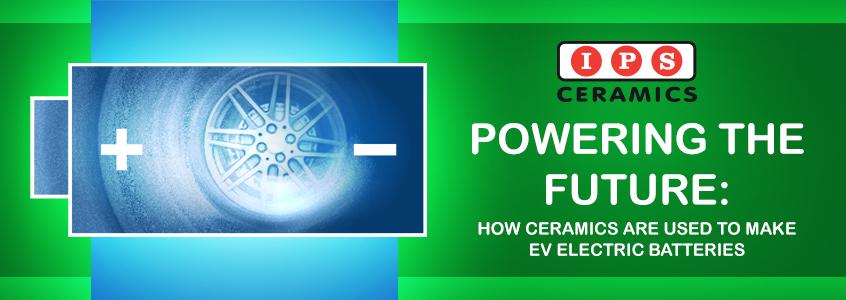Blog

Powering the Future: How Ceramics are Used to Make EV Batteries
Posted by Tom Evans on January 26, 2021
With green movements on the rise and many countries looking to reduce their carbon footprint, the world is seeing massive growth in electric vehicle battery production. The race is now on to develop an industry standard battery which costs less, recharges quicker, holds more charge and lasts longer.
As with most modern technologies, ceramics are a surprisingly important part to the battery production process. Here are merely two ways that ceramics contribute to sustainable travel.

The average battery is made from an anode, a cathode, and an electrolyte. The electrolyte moves lithium ions from the anode to the cathode, creating a flow of electricity which is harnessed to provide power. The cathode materials are made by using chemical processes to produce a high purity slurry which is first calcinated at a high temperature, then typically baked onto a copper foil. For these production processes to work, it is important that the cathode materials remain free of any impurities (notably iron, vanadium and sulphur). This is where IPS heat treatment equipment comes in.
Mullite saggars are generally used for holding cathode materials during heat treatment due to their non-reactive properties and ability to withstand high temperatures. Many companies are also looking into using similar saggars made from ceramics such as cordierite and alumina.
IPS’ Silicon Carbide products are also used in the furnaces which heat treat cathode and anode materials. Silicon Carbide is frequently used to make rollers, heating elements, burner nozzles, radiant tubes and more, utilising its outstanding heat-resistant properties and ability to withstand high loads. These products give furnace operators much more control over their furnace’s internal atmosphere and firing cycles.

EV batteries are usually composed of several thin layers of materials which are fused together to form a single product. The process requires high temperatures which must be tightly controlled.
For these purposes, we designed a specialist alumina module. The module is light and compact while retaining incredible strength and heat resistance, making it perfect for firing small components at high temperatures. Its modular design also makes the system infinitely customisable, meaning that the same parts can be used to fire multiple components. Alumina is the perfect material for the module, being non-reactive, chemically stable, and highly dependable.
These products have been developed by working with individual EV battery manufacturers. IPS Ceramics is dedicated to helping the latest technological advancements, particularly when they’re linked to increasingly important green initiatives.
You can find more about our range on dedicated EV Battery Industry page. If you have a project where you think our ceramics could help, let us know and we will work with you to deliver a solution. Email us at enq@ipsceramics.com or call us at 01782 711511 (UK) / 980-250-3647 (US).
